European industry is very active in nearly all fields of production systems. This makes Europe one of the strongest outfitters and operators of factories. One of the key elements of this great success is the high quality of the produced components and production systems. However, European manufacturing industries are at a turning point, as they are confronted with new challenges. Companies are facing rapidly changing customer and production requirements. The trend towards mass customization and make-to-order are leading to smaller production numbers and requires highly flexible production systems.
‘Plug & Produce’ production systems for industrial and consumer goods need to be developed that can provide high flexibility with respect to products, production volumes, processes and production environments. Furthermore, these systems need to be easily reconfigurable to react to rapid market changes. Therefore, such systems need to be equipped with intelligent, self-adaptive process modules, which can be brought into operation by inserting them into adaptable production systems.
With increasing costs for global transportation and mass production (overproduction, stock holding, failed products, etc.), coupled with an increasing demand for customised products, the requirement for local fabrication solutions becomes increasingly important. Such local fabrication solutions are not solely aimed at performing mass production close to the consumer, but rather at providing products that are maximally adapted to customer requirements, close to the required location and at the right time.
Many industries, such as medical devices, biotechnology or electronics have increasing quality assurance requirements from production processes and the environment where these take place. The modular, rapidly configurable and local production system must therefore also be adaptable to the very specific requirements of different industries and thus allow implementation of Good Manufacturing Practice (GMP) as required for manufacturers of foods or medical devices in terms of cleanliness or clean-room requirements.
‘Plug & Produce’ production systems for industrial and consumer goods need to be developed that can provide high flexibility with respect to products, production volumes, processes and production environments. Furthermore, these systems need to be easily reconfigurable to react to rapid market changes. Therefore, such systems need to be equipped with intelligent, self-adaptive process modules, which can be brought into operation by inserting them into adaptable production systems.
With increasing costs for global transportation and mass production (overproduction, stock holding, failed products, etc.), coupled with an increasing demand for customised products, the requirement for local fabrication solutions becomes increasingly important. Such local fabrication solutions are not solely aimed at performing mass production close to the consumer, but rather at providing products that are maximally adapted to customer requirements, close to the required location and at the right time.
Many industries, such as medical devices, biotechnology or electronics have increasing quality assurance requirements from production processes and the environment where these take place. The modular, rapidly configurable and local production system must therefore also be adaptable to the very specific requirements of different industries and thus allow implementation of Good Manufacturing Practice (GMP) as required for manufacturers of foods or medical devices in terms of cleanliness or clean-room requirements.
External Collaborations
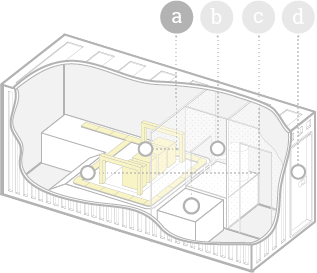
Production System Concept
- Interchangeable modular architecture
- Small footprint
- ‘Plug & Produce’ control system
- Built in quality assurance and traceability
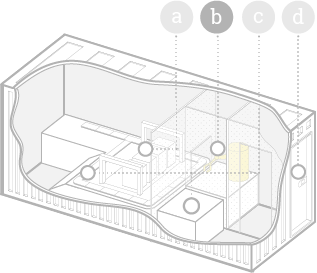
Process Modules
- Comprehensive pool of process modules
- Enables customized products, including Additive Manufacturing, CNC milling, Assembly and Cleaning
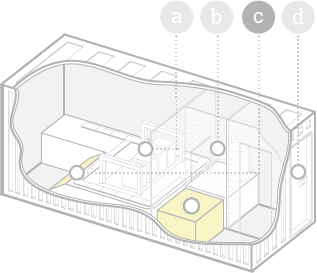
Human Machine Interface
- Easy-to-use user interface
- Software for direct production of custom products
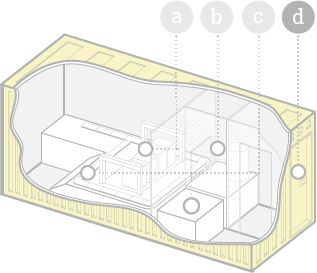
Technical Container
- 20‘ ISO-Container
- Comprehensive cleanliness concept
- Validation (e.g. GMP) possible if required
Use case scenarios
CassaMobile will successfully demonstrated a generic Mini-Factory prototype capable of fulfilling three use cases. The section below explains the proposed industrial scenarios and pilot implementations in detail. These scenarios testify the dedication of industrial partners and how CassaMobile integrates these into the scientific and technological progress.
Scenario 1 – Mini-Factory for the localized production of bone drill guides
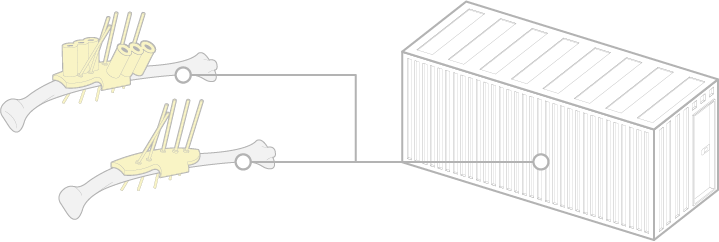
Background, current Situation and bottlenecks
The first demonstration scenario targets the commissioning and ramp-up of a new real-life production system. Materialise currently produce bone drilling and cutting guides for pre-planned orthopaedic surgeries. These guides enable surgery that is more precise, faster and with a much lower environmental footprint. Materialise currently produces these drill and cutting guides in batches using Selective Laser Sintering.
It is estimated that on average the total lead time of a bone drilling guide takes about 10-15 days from start (data capturing) to end (operation of the patient). In the whole chain of producing the guide, the delivery time takes about 30% of the total lead-time. For trauma-cases, which cannot be planned in advance, this delivery time is unacceptably high. This leads to the desire for an advanced production facility that can enable rapid manufacturing of the surgical guides at the location of need and exactly at the required time.
It is estimated that on average the total lead time of a bone drilling guide takes about 10-15 days from start (data capturing) to end (operation of the patient). In the whole chain of producing the guide, the delivery time takes about 30% of the total lead-time. For trauma-cases, which cannot be planned in advance, this delivery time is unacceptably high. This leads to the desire for an advanced production facility that can enable rapid manufacturing of the surgical guides at the location of need and exactly at the required time.
How to tackle these bottlenecks
This important bottleneck can be tackled by having local, faster and flexible production facilities, which allow fast but high quality production of bone drilling and cutting guides. With a local production facility, first of all the shipment time will be virtually eliminated, secondly, the total production time can be reduced significantly using faster processes and more advanced automation.
Scenario 2 – Mini-Factory for the local production of orthotics
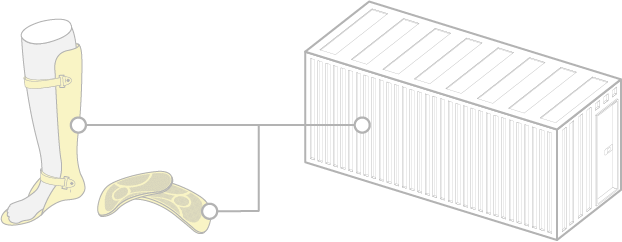
Background, current Situation and bottlenecks
Orthotics is a discipline concerned with the design, manufacture and application of orthoses. Orthoses are externally applied devices used to modify the structural and functional characteristics of the neuromuscular and skeletal system. Whilst patients are typically seen in a local clinic, currently, orthotic products are centrally fabricated off-site in a remote factory location. A feature of the current model is that the patient is required to attend the hospital for multiple appointments i.e. clinical assessment, fitting, and supply. The typical lead time for ordering, manufacture, and delivery is ten working days. As a result the patient is typically required to attend clinic three times over a period of six weeks. These are frequently people who will have challenges with mobility and so delays in treatment will often impact on their independence and enablement.
How to tackle these bottlenecks
CassaMobile aims to reduce production time allowing the patient to attend the hospital and be supplied with an orthotic within a matter of hours of the original assessment i.e. in a single day. In the case of larger orthoses we will demonstrate the use of modular systems with individually customised components for interfaces with the body. These will have simple assembly systems so that onsite assembly is possible.
Scenario 3 – Mini-Factory for the local production of individual grippers
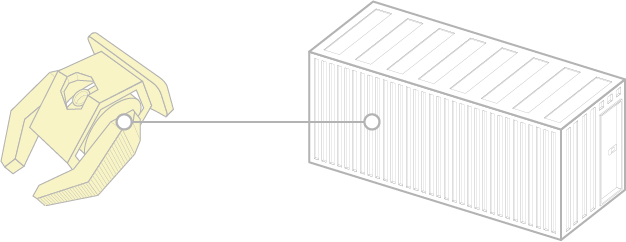
Background, current Situation and bottlenecks
Today gripper systems for industrial use are made from only a few different components. There are on the one hand standardized components from catalogues; on the other hand customized parts are sometimes needed that fit exactly to the object to be handled. Those customized components are very important, for example when grippers are used in combination with robots, the complexity of programming the robot is highly influenced by the gripper design. There are fingers for the grippers but also adapter plates and flanges that vary in nearly every case. To produce that kind of customized adaption using current techniques requires a huge amount of work and it takes a significant time to be performed and shipped.
How to tackle these bottlenecks
With advanced technologies such as Additive Manufacturing and CNC milling it is possible to produce almost any geometric shape without any tools; within a certain range of materials and sizes. Thus the vision of the next industrial revolution to produce every product when it is needed and where it is needed is getting close.
With the CassaMobile idea of mobile production lines available even for clean-room environments, it will also be possible in the future to produce customized grippers rapidly and directly at the point of need.
With the CassaMobile idea of mobile production lines available even for clean-room environments, it will also be possible in the future to produce customized grippers rapidly and directly at the point of need.






